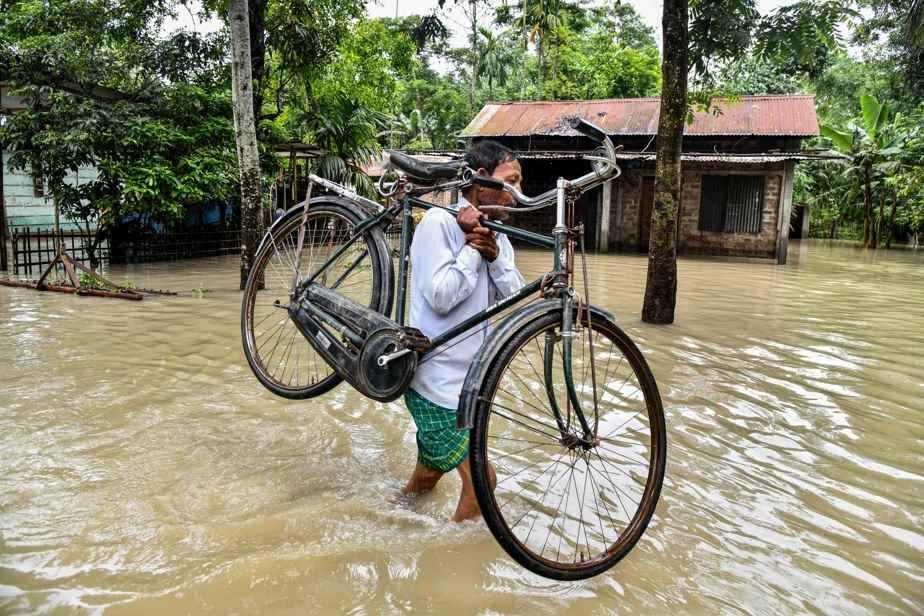(Guwahati) At least 26 more people have died in India in monsoon-triggered floods or after being struck by lightning, as millions of people are affected in the country and in neighboring Bangladesh, Monday said. announced the authorities.
Posted at 7:38
Floods are a regular threat in India and Bangladesh and, according to experts, climate change is increasing their frequency, severity and suddenness for these two countries with a total population of 1.6 billion.
In the northeastern state of Assam, three people died in landslides while six others died in floods, according to disaster management authorities.
In Bihar state, further east, lightning accompanying thunderstorms killed at least 17 people, according to the minister responsible for disaster management, Renu Devi.
Some 5,140 villages are submerged and more than 100,000 residents have taken refuge in emergency shelters across the state which experienced heavy flooding in April that killed 44 people.
After a few weeks of respite, the water level rose again in June, at the start of the monsoon season.
In neighboring Meghalaya state, at least 16 people have died since June 17 as landslides and flooding rivers submerged roads.
Bangladesh has also been hit by devastating floods, killing dozens of people and affecting millions.
On Monday, floodwaters were gradually receding from Sylhet district in the northeast of the country, but millions of people are still stranded, said Mosharraf Hossain, the district’s chief administrator.
“Emergency shelters are full. There are huge problems with food and drinking water. Many are afraid to return home while others have lost their homes during the rising waters,” he told AFP.
The decline is causing flooding in districts further downstream in Habiganj and Brahmanbaria, officials said.
In Jamalpur district, an eight-year-old girl died after being swept away by powerful currents, police officer Aminul Islam told AFP.
Heavy rainfall also continued in the southeastern districts of Chittagong Hills, causing flooding in the port city and increasing the risk of landslides.
